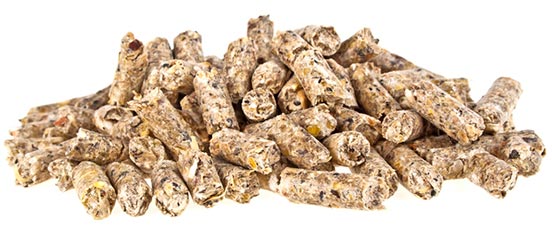
Shortage of Feed-grade Vitamins
Check vitamin A level in feedstuffs to know if levels are adequate to meet needs.
What does a shortage of a substance used in perfumery have to do with the price of livestock feed supplements? Well, it’s because the lemony-scented citral used in aroma and fragrance products also is important to the manufacture of feed-grade vitamins A and E.
More cattle producers are learning how important citral is when they seek answers to why some feed supplement prices are climbing. It’s the kind of question asked of Purina Livestock Nutritionist Christina Hayes during the 2018 Cattle Industry Convention & NCBA Trade Show Jan. 31-Feb. 2 in Phoenix, Ariz.
According to Hayes, there just isn’t enough citral to go around, and there probably won’t be for the next few months. An October fire in a manufacturing plant in Germany and environmental regulation issues for a plant in China have curbed production and created a worldwide shortage of citral. The shortage affects the manufacture of vitamin A used in a variety of livestock feeds.
“It could be April before the German plant restarts and perhaps June or July before supplies to the U.S. are resumed,” said Hayes.
Feed companies are responding in different ways. Some, like Purina, are manufacturing certain “non-fortified” products, while continuing to add the scarce vitamins to others. These products may be reformulated and contain lower levels of vitamin A and E than before, in order to stretch supplemental vitamin inventories.
Hayes said that supplementing vitamins has, historically, been so inexpensive that many feed products contained levels well above National Research Council (NRC) requirements. Some reformulated products may still contain vitamin levels that meet or exceed NRC requirements. Others may not. Hayes said cow-calf producers headed into calving season will want to know what vitamin nutrition is provided by any supplements they are using, and whether it is adequate for lactating cows.
“There is a definite need for customer education, so producers understand that there are changes happening,” said Hayes. “If there is no A and E in their feed supplements, or not enough, they will need to provide vitamins through a mineral program.”

Editor’s Note: Troy Smith is a freelance writer and cattleman from Sargent, Neb. This article was written as part of Angus Media’s coverage of the 2018 Cattle Industry Convention and is copyrighted. See additional coverage distributed through Angus Media channels including the Angus Journal, Angus Beef Bulletin, Angus Beef Bulletin EXTRA, The Angus Report and online at www.angus.org.






